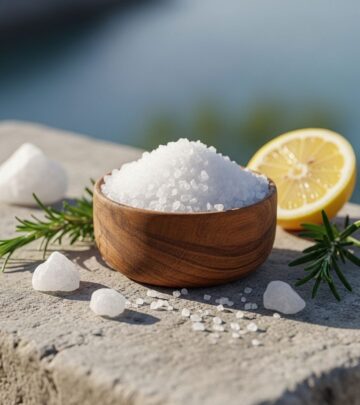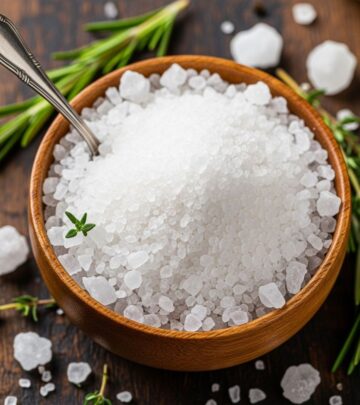13 Remarkable Health Benefits of Tamarind: Uses, Nutrition & Recipes
A tangy twist that soothes digestion, eases inflammation, and fuels natural vitality.

13 Remarkable Health Benefits of Tamarind
Tamarind (Tamarindus indica) is a tropical fruit renowned for its tangy-sweet flavor and extensive use in culinary traditions around the world. But beyond its culinary allure, tamarind packs an impressive nutritional profile and offers numerous health benefits. In this article, we explore the science-backed advantages of consuming tamarind—covering everything from digestion and weight loss to its antioxidant power and more.
Overview: What is Tamarind?
Tamarind is native to Africa, but now thrives in tropical regions of South Asia, Central America, the Caribbean, and Mexico. The fruit grows in brown pods containing a sticky, dark pulp used in cuisines and traditional medicine. Its taste ranges from sour to sweet, depending on ripeness.
- Rich in vitamins (notably vitamin C, B vitamins) and minerals (magnesium, potassium, phosphorus).
- High dietary fiber content.
- Packed with polyphenols, flavonoids, and other antioxidants.
- Commonly found as pulp, concentrate, paste, candies, or fresh pods.
Key Nutritional Components of Tamarind
| Nutrient | Benefits |
|---|---|
| Vitamin C | Supports immunity, collagen synthesis |
| Magnesium | Regulates muscle/nerve function, blood pressure, bones |
| Potassium | Maintains fluid balance, reduces blood pressure |
| Dietary Fiber | Promotes satiety, regulates digestion |
| Flavonoids/Polyphenols | Antioxidant, anti-inflammatory effects |
1. Promotes Healthy Digestion
Tamarind contains high dietary fiber and natural acids that help stimulate the digestive system, supporting regularity and alleviating constipation. Its mild laxative properties relieve symptoms of indigestion. The fruit boosts bile production, aiding fat breakdown and promoting smoother digestion.
- Used traditionally to treat constipation and sluggish digestion.
- Tamarind water or juice can cleanse the digestive tract and reduce bloating.
2. Natural Weight Loss Aid
Tamarind is rich in hydroxycitric acid (HCA), a compound shown to suppress appetite and block fat storage. It boosts metabolism, curbs hunger, and aids fat burning, making it a popular choice for weight management.
- Consuming tamarind water before meals reduces caloric intake.
- High fiber content promotes fullness, preventing overeating.
- Try tamarind salads, smoothies, or snacks for a tangy, metabolism-enhancing addition to your diet.
3. Rich Source of Antioxidants
Tamarind pulp is loaded with antioxidants, including beta-carotene and flavonoids, which play a key role in neutralizing free radicals in the body and protecting against oxidative stress. These antioxidants support cellular health, slow aging, and may help prevent chronic illnesses.
- Beta-carotene supports eye health.
- Polyphenols like flavonoids reduce inflammation and may lower disease risk.
- Regular intake helps strengthen immune defense.
4. Supports Heart Health
Tamarind’s potassium and magnesium contents aid in regulating blood pressure, supporting proper heart function, and maintaining cardiovascular health. Fiber and antioxidants in tamarind also contribute to lowering cholesterol levels.
- Potassium helps manage high blood pressure.
- Magnesium promotes strong blood vessels and overall heart health.
- Polyphenols may help reduce risk of heart disease by lowering LDL cholesterol.
5. Anti-inflammatory Properties
Tamarind is recognized as a natural anti-inflammatory agent, owing to its concentration of flavonoids and polyphenols. These plant compounds help soothe inflammation in the body, reduce joint pain and swelling, and can benefit individuals with arthritis or other inflammatory conditions.
- Traditionally used to treat swollen joints, sprains, and sore throats.
- External application of tamarind pulp/leaf extracts can reduce pain.
- Trypsin inhibitor found in tamarind helps regulate hunger and satiety hormones linked to inflammation.
6. Boosts Immunity
Vitamin C and antioxidants in tamarind strengthen the immune system, helping the body resist infections. Its antimicrobial properties ward off bacteria and viruses, and the fruit is often used to speed recovery from minor illnesses in traditional medicine.
- Used for sore throat, fever, and sunburn relief in folk medicine.
- Natural compounds in tamarind may boost immune response.
7. May Aid Diabetes Management
Some studies suggest that tamarind seeds and pulp help regulate blood glucose levels by improving insulin sensitivity and reducing inflammation, making it a potential ally for diabetic individuals. It is traditionally used for diabetes management in South Asian cultures.
- Dietary fiber slows sugar absorption, regulating blood sugar spikes.
- Polyphenols assist with hormonal balance.
8. Supports Skin Health
Tamarind’s antioxidants and vitamins, especially vitamin C, promote skin healing, reduce pigmentation, and may help prevent acne. The pulp is used as a natural exfoliant in scrubs, face masks, and beauty treatments.
- Helps lighten dark spots and remove dead skin cells.
- Used for sunburn relief and treatment of minor wounds in traditional medicine.
9. Promotes Healthy Liver Function
Compounds in tamarind support liver detoxification and bile production. Tamarind water is believed to help cleanse the liver and reduce fatty buildup, contributing to overall organ health.
10. May Improve Eye Health
Beta-carotene in tamarind acts as a precursor for vitamin A, supporting good vision and protecting eyes against age-related degeneration.
11. Relieves Mild Anxiety and Nervousness
Some folk applications and studies indicate that tamarind acts as a mild sedative, helping to soothe anxiety and relieve nervous tension.
- Traditionally used for calming nerves after excessive alcohol intake.
12. Potential Role in Treating Obesity
Research points to tamarind seed compounds (trypsin inhibitor) that may help regulate hunger hormones, promote fullness, and reduce risk factors associated with obesity through anti-inflammatory mechanisms.
13. Culinary Uses of Tamarind
Tamarind’s unique sweet-sour flavor makes it a favorite ingredient in global cuisines. The pulp is used in beverages, marinades, sauces, chutneys, and desserts. Its acidity helps tenderize meat and enhance vegetable dishes.
- Main ingredient in Indian chutneys, Thai pad thai, Mexican candies, and Caribbean drinks.
- Used for pickling, preserving, and adding tang to savory foods.
- Tamarind juice—refreshing, vitamin-rich, and easy to make at home.
Simple Tamarind Juice Recipe
- Ingredients: Tamarind pulp, water, lemon juice, pinch of salt, honey (optional).
- Instructions: Blend the pulp, water, and other ingredients until smooth. Chill and serve.
This easy beverage supports digestion and weight loss while delivering a delightful tang.
How to Include Tamarind in Your Diet
- Tamarind Water: Soak pulp overnight, strain, and drink first thing in the morning to curb appetite.
- Salad Dressing: Mix tamarind paste, olive oil, lemon juice, and salt for a zesty salad boost.
- Tamarind Smoothies: Blend tamarind with berries, greens, and honey for a nutritious snack.
- Tamarind Balls: Combine tamarind paste with dates or jaggery for a healthy, tangy treat.
- Soups & Stews: Add tamarind to broths to enhance flavor and aid digestion.
Cautions & Possible Side Effects
- Consume tamarind in moderation—its acidity may aggravate sensitive stomachs or acid reflux.
- Excessive consumption may interact with certain medications (especially blood sugar and blood pressure medications).
- Always consult your physician before making tamarind a regular supplement, especially if you have underlying health conditions.
Frequently Asked Questions (FAQs)
Q: What does tamarind taste like?
A: Tamarind is sweet and tangy, with sour notes in unripe fruit and a pleasant sweetness in ripe pods.
Q: Is tamarind good for weight loss?
A: Yes, tamarind is rich in fiber and hydroxycitric acid (HCA), both of which may suppress appetite and boost fat metabolism.
Q: Can tamarind help with digestion?
A: Absolutely. Tamarind’s fiber and natural acids act as a gentle laxative and digestive stimulant, supporting healthy gut function.
Q: Are there any risks to eating tamarind?
A: Tamarind is safe for most people in moderation. Those with acid reflux or taking medications (especially for blood sugar or blood pressure) should consult their doctor.
Q: How can I use tamarind in cooking?
A: Use tamarind paste for sauces, chutneys, marinades, beverages, and desserts. It adds a unique tang to both savory and sweet dishes.
Conclusion
Tamarind is much more than a culinary delight. Its rich nutritional profile, combined with a wealth of proven health advantages—from digestion and weight loss to fighting inflammation—make it a smart addition to a balanced diet. Whether sipped as juice, tossed into salads, or woven into classic dishes, tamarind’s versatility and health benefits are hard to match. Enjoy this tangy fruit in moderation to maximize its positive impact on your well-being.
References
- https://cabaretefitnesscamp.com/tamarind-juice-benefits/
- https://health.clevelandclinic.org/tamarind
- https://timesofindia.indiatimes.com/life-style/food-news/6-ways-to-include-tamarind-in-your-diet-for-effective-weight-loss/articleshow/118235391.cms
- https://www.stylecraze.com/author/ramonasinha/
- https://www.youtube.com/watch?v=WGTd4tJj8EQ
Read full bio of medha deb












